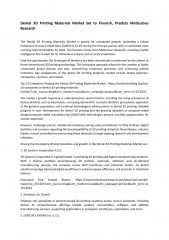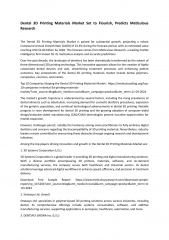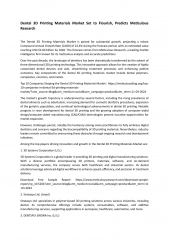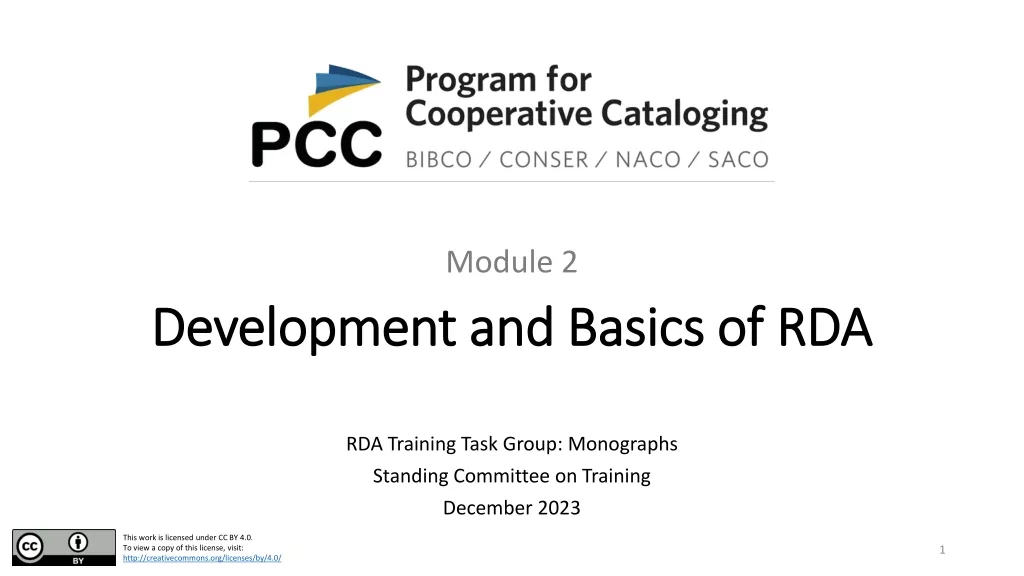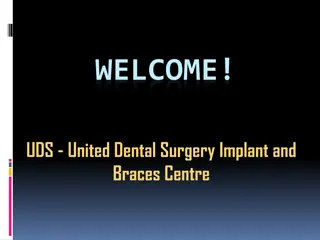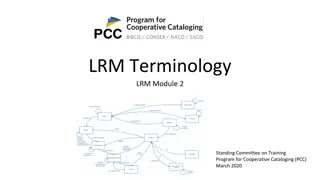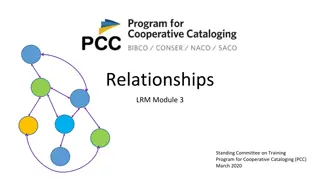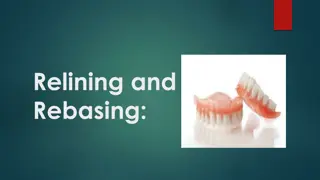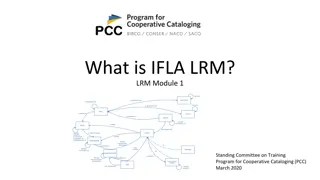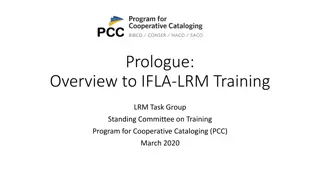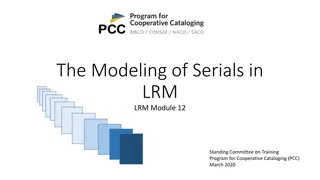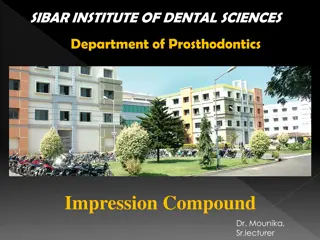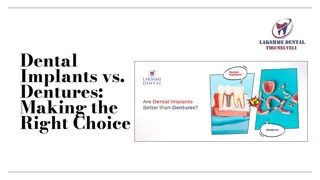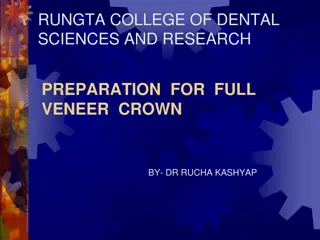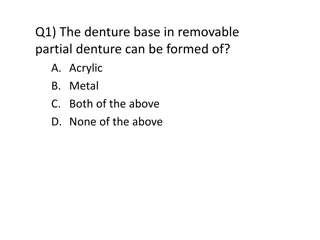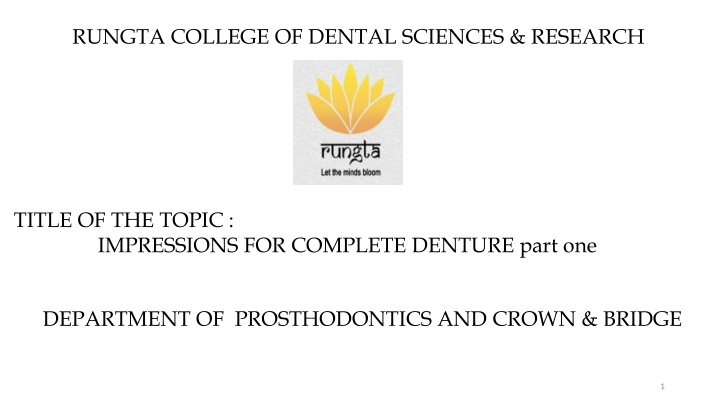
Impressions for Complete Denture: Understanding Objectives and Techniques
Explore the core areas of impression making for complete dentures, including definitions, objectives, theories, classifications, advantages, and more. Discover the importance of preservation and retention in creating successful dentures. Dive into factors affecting denture retention and learn key principles outlined by experts in the field.
Download Presentation

Please find below an Image/Link to download the presentation.
The content on the website is provided AS IS for your information and personal use only. It may not be sold, licensed, or shared on other websites without obtaining consent from the author. If you encounter any issues during the download, it is possible that the publisher has removed the file from their server.
You are allowed to download the files provided on this website for personal or commercial use, subject to the condition that they are used lawfully. All files are the property of their respective owners.
The content on the website is provided AS IS for your information and personal use only. It may not be sold, licensed, or shared on other websites without obtaining consent from the author.
E N D
Presentation Transcript
RUNGTA COLLEGE OF DENTAL SCIENCES & RESEARCH TITLE OF THE TOPIC : IMPRESSIONS FOR COMPLETE DENTURE part one DEPARTMENT OF PROSTHODONTICS AND CROWN & BRIDGE 1
Specific learning Objectives At the end of this presentation the learner is expected to know ; Core areas* Domain ** Category # Introduction Cognitive Must Know Definition Cognitive Must Know Objectives of impression making Cognitive Must Know Theories of Impressions Cognitive Must Know Classifications of impression techniques Cognitive Must Know Advantages disadvantages Cognitive Must Know Take Home Message Cognitive Must Know References Affective Desired to Know 2
Table of Content Introduction Definition Objectives of impression making Theories of Impressions Classifications of impression techniques Advantages disadvantages Take Home Message References 3
Introduction Objectives of impression making P - Preservation of the alveolar ridges. R - Retention E - Esthetics. S - Stability. S - Support. - Carl O. Boucher in 1944
Preservation of the alveolar ridges M.M. De Van s dictum It is more important to preserve what already exists than to replace what is missing . Not to use heavy pressure Covering as much of the supporting areas as possible - minimize the possibility of soft tissue abuse and bone resorption.
Retention Retention of a denture is that quality inherent in the dental prosthesis acting to resist the forces of dislodgment along the path of placement It depends upon factors that produce attachment of the denture to the mucosa. Resists the adhesiveness of foods, the force of gravity and the forces associated with the opening of the jaws
Factors affecting retention of dentures Anatomical factors Physiological factors Physical factors Mechanical factors Muscular factors
Anatomical factors Size of denture bearing area - Retentive force is directly proportional to the area covered. Quality of the denture bearing area Physiological factors Saliva and its quality
Physical factors Adhesion Cohesion Interfacial surface tension Capillarity and capillary attraction Atmospheric pressure and peripheral seal
Mechanical factors Retentive springs Undercuts Magnetic forces Denture adhesive Suction chambers and suction discs Muscular factors The muscles apply supplementary retentive forces on the denture. It is most effective in the neutral zone.
Oral and facial musculature provides supplementary retentive forces Denture bases must be properly extended to cover the maximum area possible The occlusal plane must be at the correct level The arch form of the teeth must be in the neutral zone
Stability The quality of a dental prosthesis to be firm, steady or constant, to resist displacement by functional horizontal or rotational stresses Relationship of the denture base to the underlying bone Attained by more intimate contact of labial and buccal flanges with the labial and buccal slopes and of the lingual flanges with the lingual slopes of the ridge.
To be stable a denture requires Good retention No interfering occlusion Proper tooth arrangement Proper form and contour of the polished surfaces Proper orientation of the occlusal plane Good control and coordination of the patient's musculature.
Support The resistance to vertical forces of mastication and to occlusal or other forces applied in a direction toward the basal seat. Enhanced by selective placement of pressures that are in harmony with the resiliency of the tissues that make up the basal seat.
Areas of support are divided into Areas of support Maxillary: Posterior ridges and flat areas of the palate Mandibular: Buccal shelf, posterior ridges Reason: These are the areas that are at right angles to the occlusal forces and usually do not resorb easily Primary Maxillary: Anterior ridge and all ridge slopes. Mandibular: Anterior ridge and all ridge slopes. Reason: These are the areas that are greater than at right angles to occlusal forces or are parallel to them; also the areas of edentulous ridge that are at right angles to occlusal forces but tend to resorb under load. Secondary All vestibular areas that provide very little support but are needed for the very important peripheral seal Slight
Esthetics Thickness of the denture flanges Thicker denture flanges are preferred in long-term edentulous patients - labial fullness. Impression should perfectly reproduce the width and height of the entire sulcus for the proper fabrication of the flanges.
Classification of impressions A. Based on the theories of impression. Pressure theory- Mucocompressive Minimal pressure- Mucostatic Selective pressure
B. Based on the position of the mouth while making the impression. Open mouth Closed mouth C. Based on the method of manipulation for border molding. Hand manipulation Functional movements
Pressure theory : Mucocompressive Definite pressure The assumption that denture retention is tested most severely during mastication, many dentists formerly considered it essential for the tissue to remain in contact with the denture during chewing Greene in 1896 Records the oral tissues in a functional and displaced form Materials used - impression compound, waxes and soft liners. Dentures made by this technique tend to get displaced due to the tissue rebound at rest
Technique Primary impression - impression compound Special tray - base plate. Second Impression - impression compound Bite rims with uniform occlusal surfaces are then made. Areas to be relieved are softened and the impression is inserted in mouth and held under biting pressure for one or two minutes. Borders are molded by asking the patient to perform functional movements.
Advantages Better retention and support Disadvantages Excess pressure - increase alveolar bone resorption. Excess pressure on peripheral tissues and the palate - transient ischaemia. Tissue rebound when the tissue resume their normal resting state. Pressure on sharp bony ridges - pain
Minimal pressure theory : Mucostatic or non pressure or passive technique Page gave the concept of mucostatic based on Pascal s law Mucostatic Dr. Carrol W. Jones Retention is mainly due to interfacial surface tension. The mucostatic technique results in a denture, which is closely adapted to the mucosa of the denture-bearing area but has poor peripheral seal
Technique A compound impression is made. A baseplate wax space is adapted. A special tray is adapted over the wax spacer. Spacer is removed and an impression is made with a free flowing material with little pressure. Escape holes are made for relief.
Advantage High regard for tissue health and preservation : better prognosis Disadvantages Shorter flanges prevent the wider distribution of masticatory stresses. Reduced coverage Lack of border molding : reducing retention Lack of border seal: food to slip beneath the denture.
Short denture borders are readily accessible to the tongue which might provoke some irritation. Shorter flanges may reduce support for the face which can affect esthetics. The shorter flange would mean less lateral stability. Patients with poor residual ridges and reduced areas of attached gingiva were difficult to treat
Selective pressure theory Combines the principles of both pressure and minimal pressure techniques Tissue preservation + mechanical factor of achieving retention with minimum pressure, which is within the physiologic limits of tissue tolerance
Philosophy of the selective pressure technique Certain areas of the maxilla and mandible, are by nature better adapted for withstanding extra loads from the forces of mastication. These tissues can be recorded under slight placement of pressure while other tissues must be recorded at rest
Boucher divided basal seat area into different zones according to capacity to withstand masticatory loads without undergoing resorption. Secondary stress bearing area Primary stress bearing area Relief areas
Advantages Technique considers the physiologic functions of the tissues of the basal seat, and therefore appears more sound and appealing. Disadvantages Some feel that it is impossible to record areas with varying pressure. Since some areas are still recorded under functional load, the denture still faces the potential danger of rebounding and loosing retention
Open-mouth Impressions Impressions are made with the tray that is held by the dentist Advantage Preferred because the operator can see whether muscle trimming is done properly
Closed-mouth Impressions Supporting tissues are recorded in a functional relationship Wax occlusion rims that are made on preliminary casts. Border molding and the final impressions are completed McMillan - tongue movements are more forceful when teeth are together.
Advantage Saving of time Disadvantage Appointment time may fatiguing the dentist and patient Tendency for overextensions Problem of limited space between the tuberosity and pear shaped pad No control over the amount of pressure during the final impressions Soft tissues displaced- rebound bone resoption
Dynamic impression technique Cagna et al, The neutral zone revisited: From historical concepts to modern application, J Prosthet Dent 2009;101:405-412
Steps in impression making Examination and conditioning of the patient and the mouth. Seating of the patient Selection of impression material Selection of the impression tray Selection of impression technique Making the preliminary impression Constructing the primary cast Fabricating the custom tray Border molding Making the final impression
Examination and conditioning of the patient and the mouth Inflammation of the mucosa Distortion of denture-foundation tissues Excessive amounts of hyperplastic tissue Insufficient space between the upper and lower ridges
Impression material Classification Elastic 1. Reversible hydrocolloid 2. Irreversible hydrocolloid 3. Rubber impression materials a. Polyether b. Silicone Non-elastic 1. Gypsum products 2. Metallic oxide pastes 3. Impression compound
Based on Prosthodontic use Preliminary impression materials : Impression compound Alginate Final impression materials: Impression plaster zinc oxide-eugenol paste, irreversible hydrocolloid, silicone, polysulfide rubber, polyether, tissue-conditioning material
TAKE HOME MESSEGE Ideal impression must be in the mind of the dentist before it is in his hand. He must literally make the impression rather than take it - M.M. De van 38
References Zarb G, Hobkirk JA, Eckert SE, Jacob RF, editors. Prosthodontic treatment for edentulous patients. 13th ed. St. Louis: Elsevier Mosby; 2013 pp 161-179 Sheldon Winkler, Essentials of complete Denture prosthodontics, 2nd edition,2012, AITBS Publishers, India, pp 88-105 Sharry .J.J, Complete denture Prosthodontics, 3rd edition, Mc Graw Hill company, pp 191-210. Rudd and Morrow, Dental lab procedures, Complete dentures, 2nd edition, 1986, Mosby Publications, USA, Pp 9 - 89 Nair KC, A primer on complete denture fabrication, 1st edition, 2013, Ahuja publication, India Pp 67- 77 Zimmer I.D. and Sherman, H. An analysis of the development of complete denture impression techniques. J Prosthet dent 46: 242-249, 1981. Komiyama O et al, Effects of relief space and escape holes on pressure characteristics of maxillary edentulous impressions, J Prosthet Dent 2004;91:570-6
THANK YOU 40


